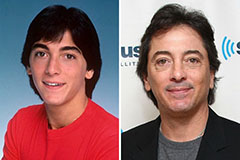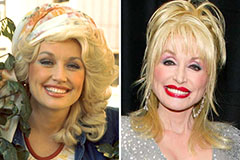A Comprehensive Overview to Usual Sprinkler Repair Work Methods
Maintaining a useful and reliable lawn sprinkler system is critical for ensuring a healthy landscape and preserving water resources. This guide uses comprehensive strategies for identifying and dealing with common lawn sprinkler problems, ranging from taking care of leaks to readjusting spray patterns and replacing damaged heads.
Identifying Lawn Sprinkler Issues
Recognizing lawn sprinkler issues is a vital initial action in effective lawn sprinkler repair. Appropriate recognition of troubles makes sure that the right options are used, minimizing downtime and preventing more damage. Common sprinkler concerns include low tide pressure, irregular water distribution, non-rotating lawn sprinkler heads, and noticeable wear or damages to elements.
Carrying out a methodical assessment is crucial. Begin by aesthetically taking a look at the lawn sprinkler heads for any type of signs of physical damage or blockage. Dirt and debris can block water circulation, bring about ineffective procedure. Next, observe the lawn sprinkler throughout its operation. Note any kind of disparities in water pressure or uneven spray patterns, which can indicate underlying concerns such as clogged nozzles or broken pipelines.
Additionally, analyze the control shutoffs and timer setups to guarantee they are functioning appropriately. Malfunctions in these parts can bring about over-watering or under-watering certain areas. Ultimately, check the area surrounding the automatic sprinkler for signs of water merging or abnormally dry spots, which might recommend leaks or inadequate insurance coverage.
Fixing Leaks
Dealing with leakages in an automatic sprinkler is important to maintaining its effectiveness and protecting against water waste. Leaks can occur as a result of numerous factors, such as worn-out seals, broken pipes, or defective connections. Recognizing the source of the leakage is the primary step. Examine the whole system, focusing on lawn sprinkler heads, valves, and pipelines. Seek pooling water or uncommonly damp locations in the lawn as indications.
When the leak source is recognized, turn off the water supply to the lawn sprinkler system. For leakages at the lawn sprinkler head, loosen the head and analyze the seal.
For leakages at shutoff connections, tighten up the fittings or replace faulty components as essential. Constantly ensure that all repair work are leak-proof before turning the water back on. Normal upkeep and timely repair services can dramatically extend the life expectancy of your lawn sprinkler and add to water conservation efforts.
Changing Spray Patterns
To change the spray pattern, first determine the kind of lawn sprinkler head in use, as different designs have varied modification devices. For rotor-type sprinklers, modifications typically involve a vital or a specialized device to alter the arc and distance.
Next, observe the lawn sprinkler in procedure. Make certain that the spray gets to the desired coverage location without overlapping excessively onto pathways, driveways, or buildings. Fine-tuning might be essential to achieve optimum coverage, which can be done by slightly tweaking the change screw or secret.
Consistently checking and adjusting spray patterns is necessary, specifically after seasonal adjustments or upkeep activities. Constant adjustments add to water preservation and promote the health and wellness and visual appeals why not find out more of the landscape, making certain the lawn sprinkler runs effectively.
Replacing Faulty Heads
Adjusting spray patterns makes certain that your lawn sprinkler runs effectively, but occasionally concerns arise that can not be remedied through basic adjustments. One common issue is a defective lawn sprinkler head, which can result in unequal water circulation or complete failing of certain zones - Sprinkler shut off replacement. To keep optimum performance, changing these defective heads is crucial
Begin by identifying the faulty head. Try to find signs such as irregular spray patterns, water pooling, or heads that do not pull back effectively. Once identified, shut off the water supply to the sprinkler system to prevent any type of unintended activation throughout the substitute process.
Next, dig deep into the area around the lawn sprinkler head, guaranteeing you do not damage the surrounding piping. Meticulously loosen the defective head from the riser, making note of the type and requirements for exact substitute (Sprinkler shut off replacement). Mount the brand-new head by screwing it onto the riser, ensuring it is securely fastened
After installation, turn the water system back on and test the brand-new head. Readjust the spray pattern as needed to anchor guarantee proper coverage. Regular assessment and timely substitute of damaged heads can substantially improve the efficiency and durability of your sprinkler system, ensuring your landscape remains rich and healthy.
Winterizing Your Lawn Sprinkler
Appropriate winterization of your lawn sprinkler is critical to stop costly damages and ensure its readiness for the next expanding season. When temperatures drop, any kind of water left in the pipes can ice up, broaden, and potentially cause fractures or burst pipelines. To prevent such problems, start by turning off the supply of water to the watering system. Next off, drain the system to remove residual water from pipes, shutoffs, and sprinkler heads. This can be done utilizing the manual drain shutoff technique, the automated drain shutoff method, or by employing an air compressor to burn out the system.
Making use of an air compressor is frequently taken into consideration one of the most efficient method. Link the compressor to the irrigation system, establishing the pressure to no greater than 50 PSI for PVC pipes or 80 PSI for adaptable polyethylene pipelines. Sequentially turn on each zone to make certain that all water is removed.
Additionally, insulate any type of above-ground parts such as backflow preventers and shutoffs. Use insulation tape or foam covers to safeguard these parts from freezing temperatures. Proper winterization not only safeguards the stability of your automatic sprinkler yet also expands its life-span, making sure effective operation come springtime.
Final Thought
Regular maintenance and prompt fixings are vital to the optimal functioning of lawn sprinkler systems. Carrying out these typical sprinkler repair strategies not just conserves water but automatic sprinkler system design also promotes the health and wellness of the landscape, emphasizing the significance of persistent upkeep.
 Scott Baio Then & Now!
Scott Baio Then & Now! Heather Locklear Then & Now!
Heather Locklear Then & Now! Justine Bateman Then & Now!
Justine Bateman Then & Now! Barbara Eden Then & Now!
Barbara Eden Then & Now! Dolly Parton Then & Now!
Dolly Parton Then & Now!